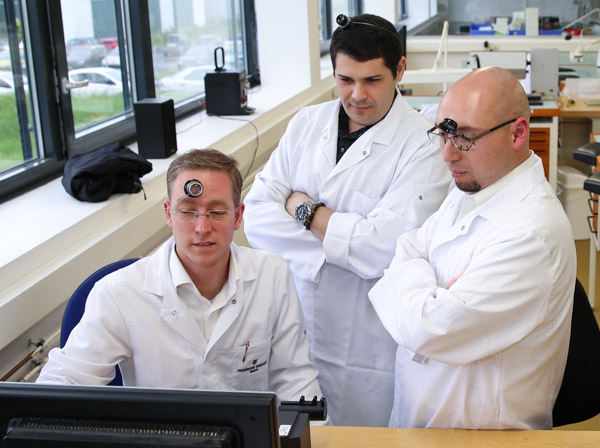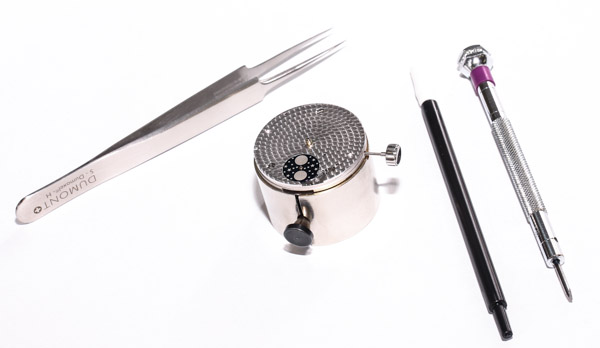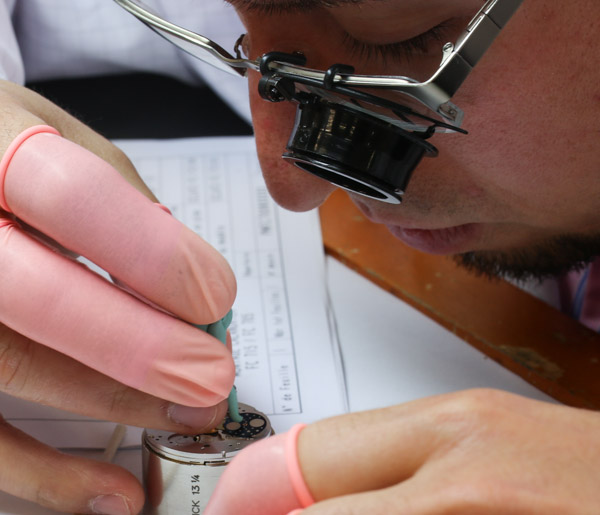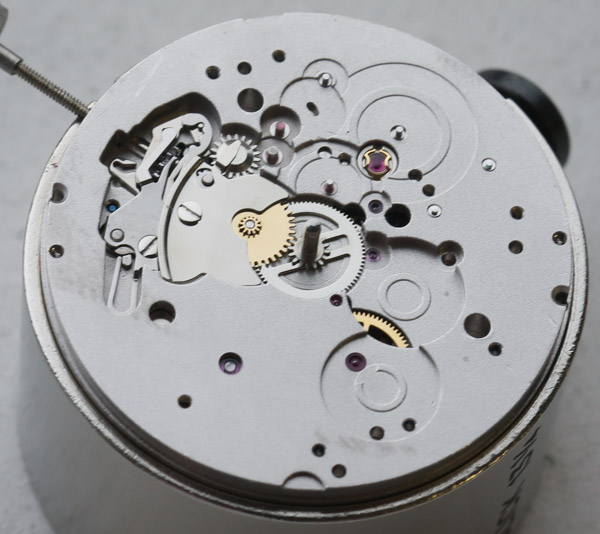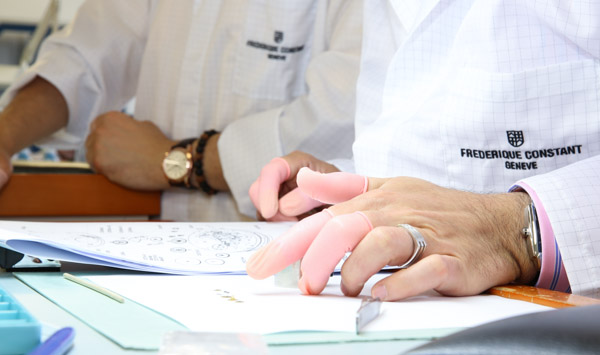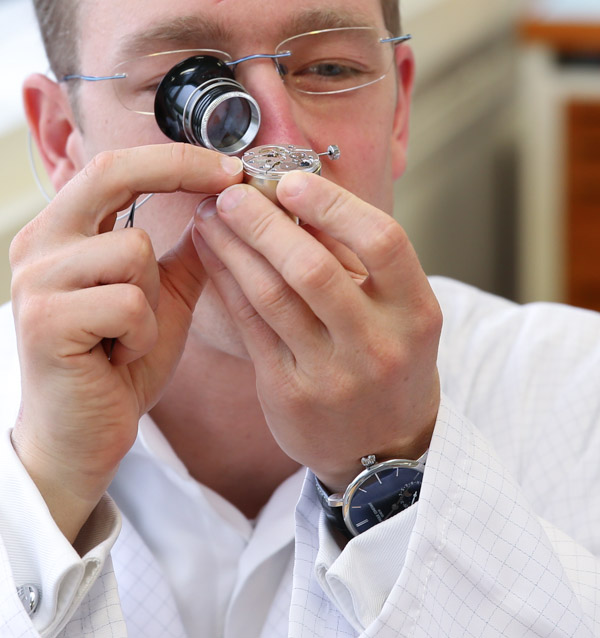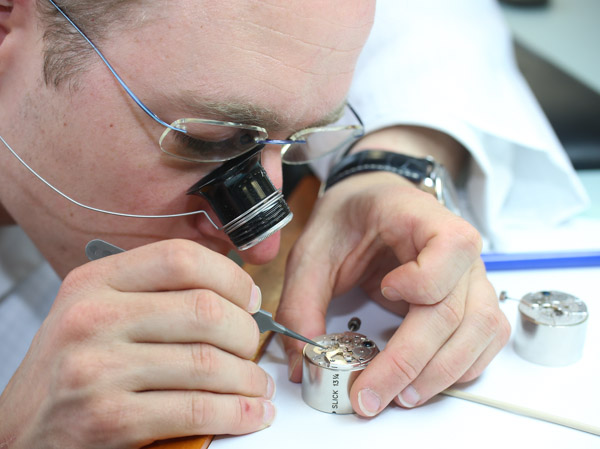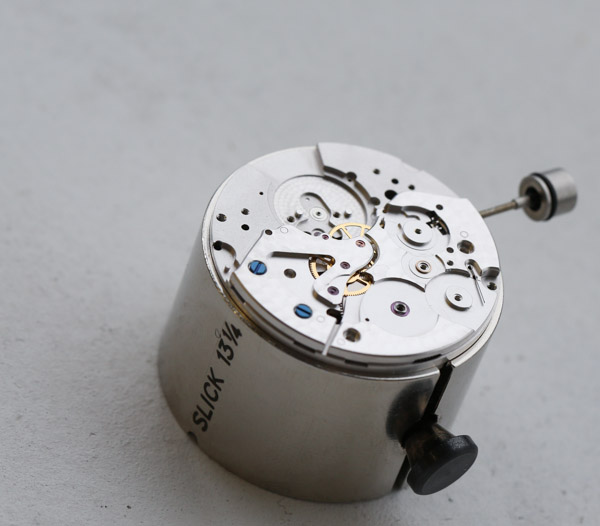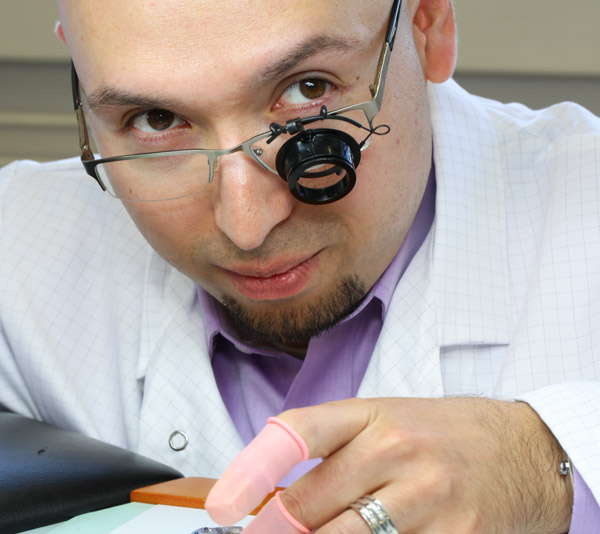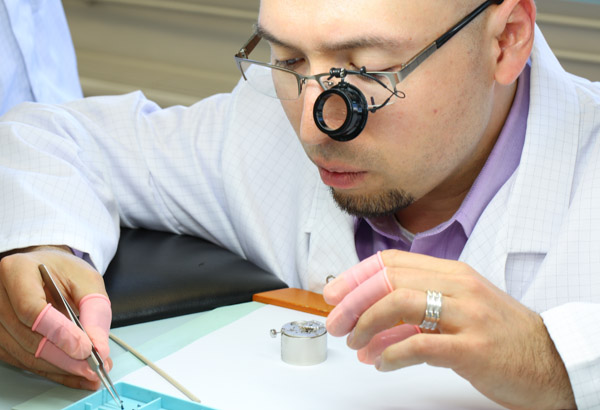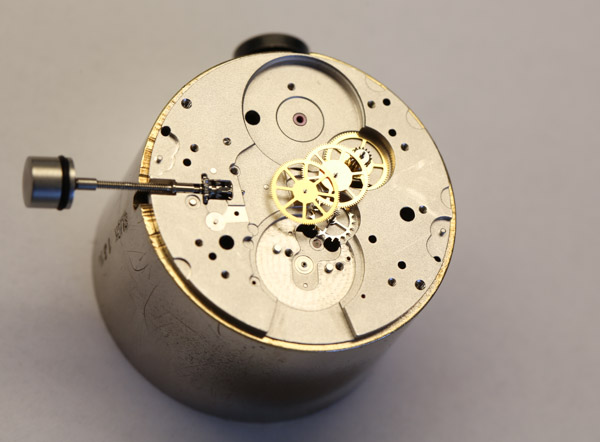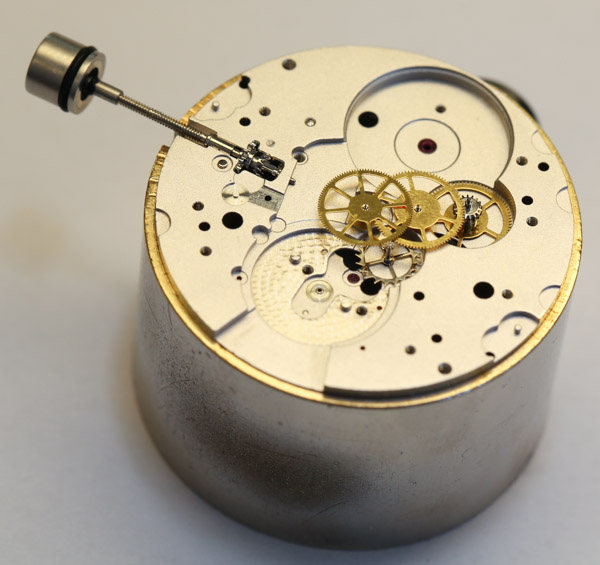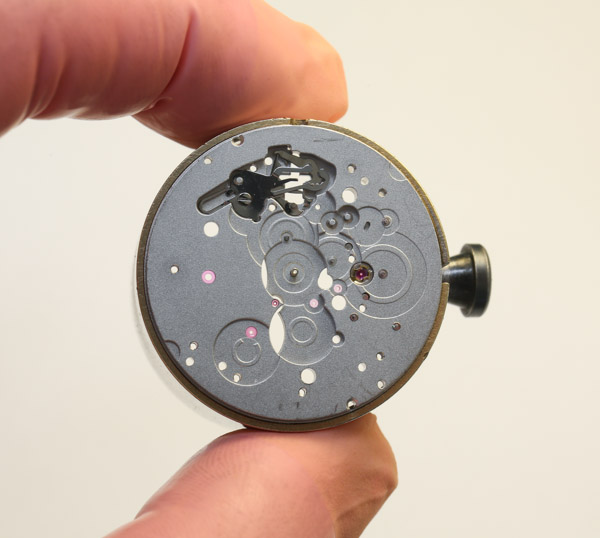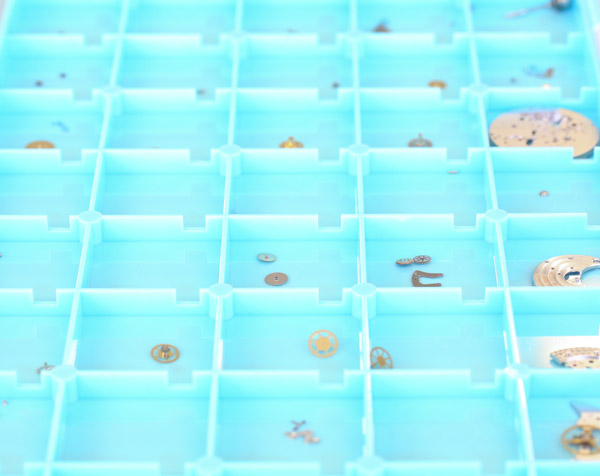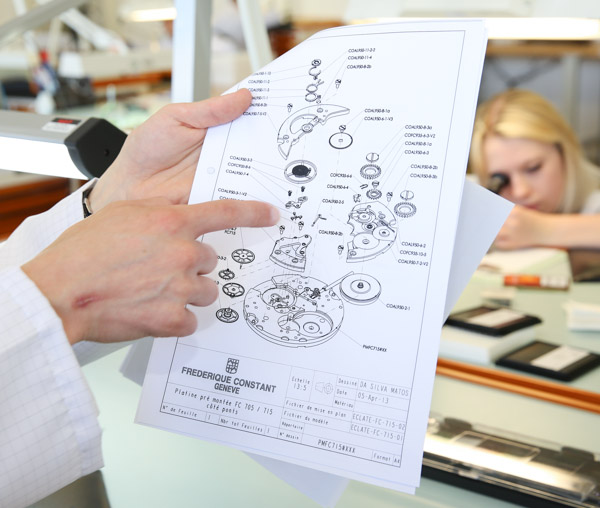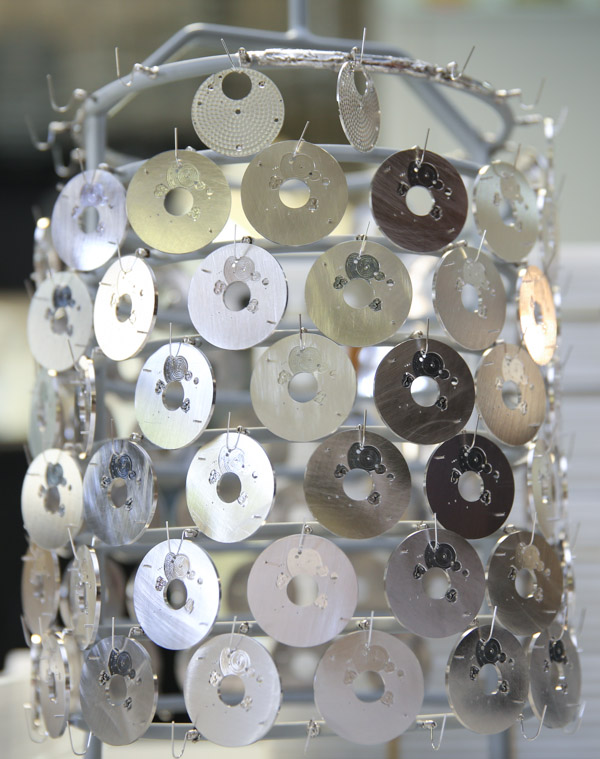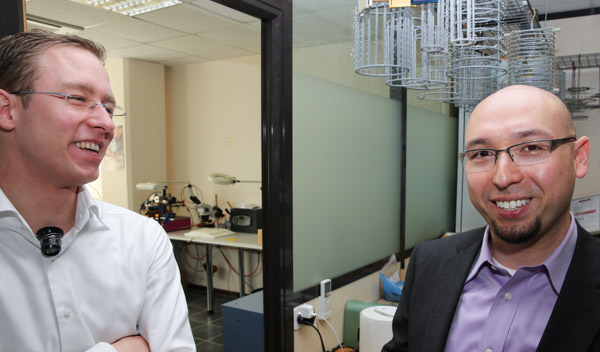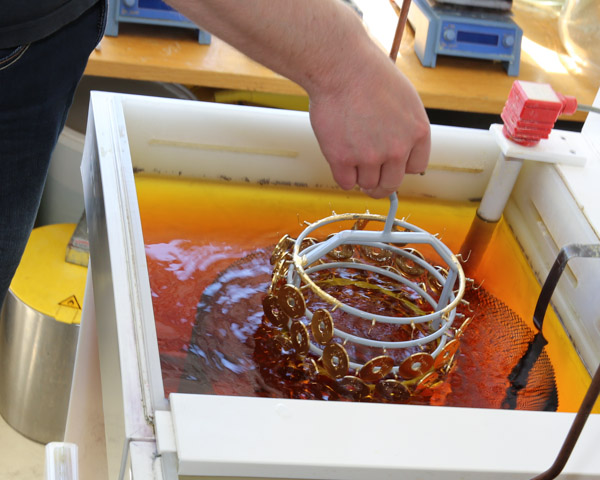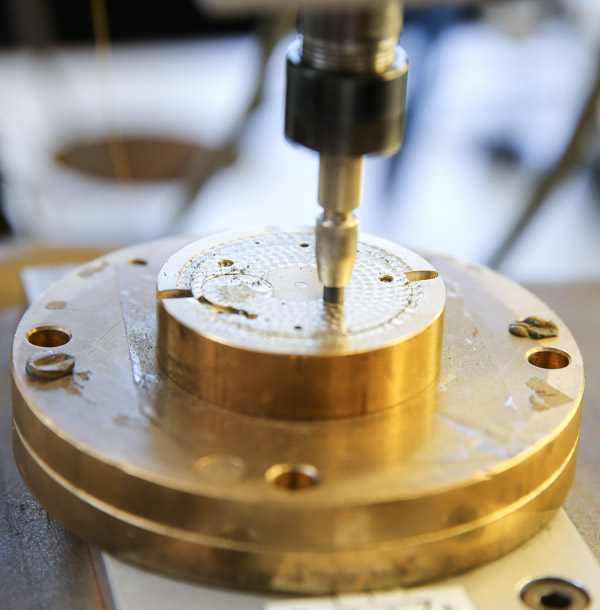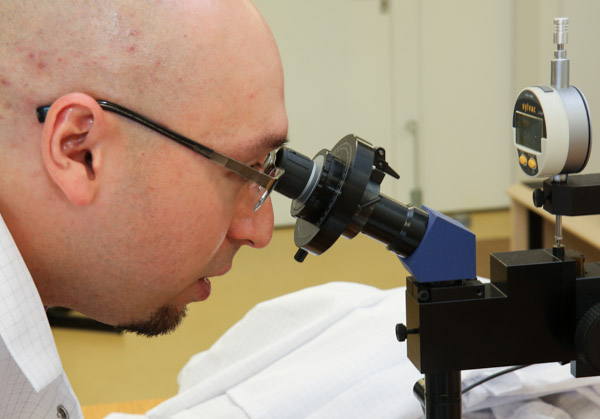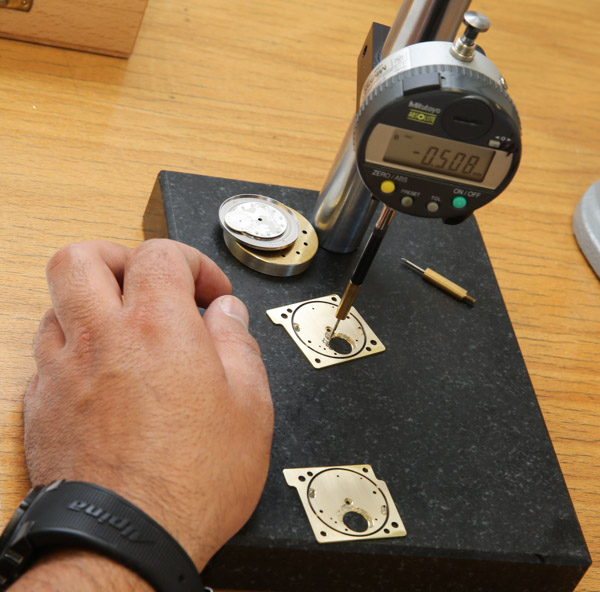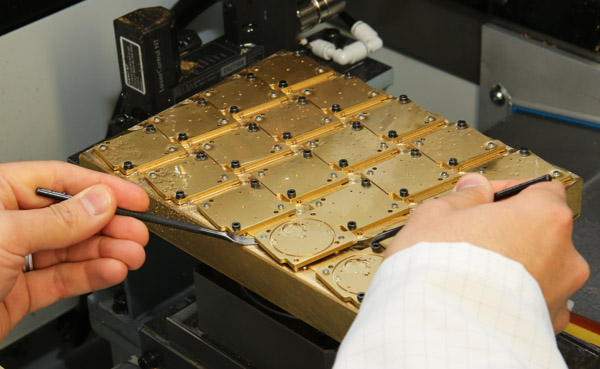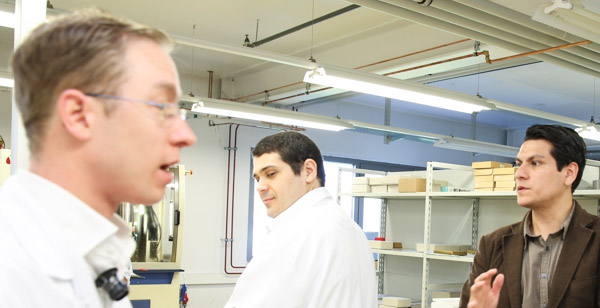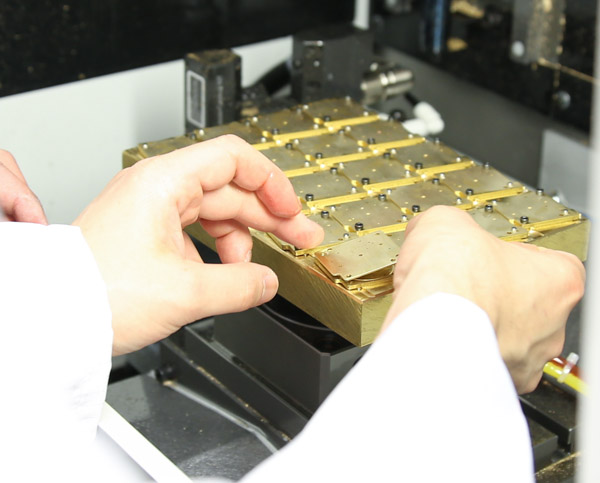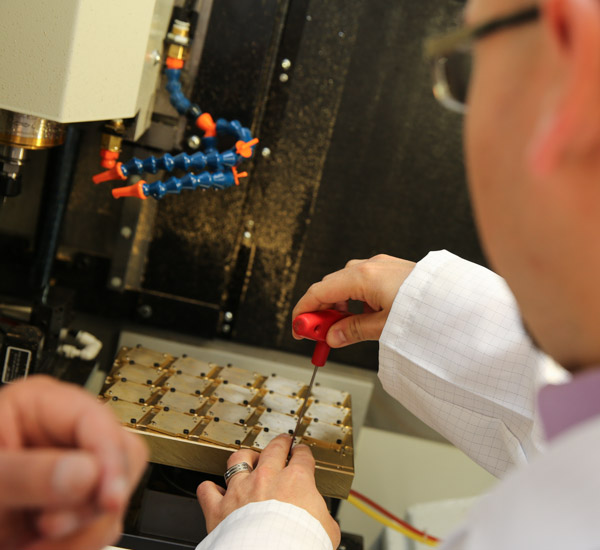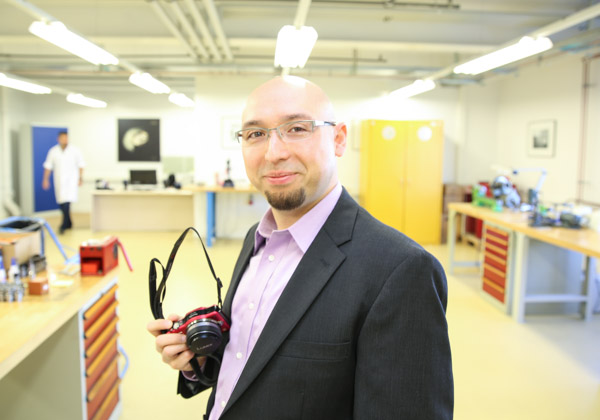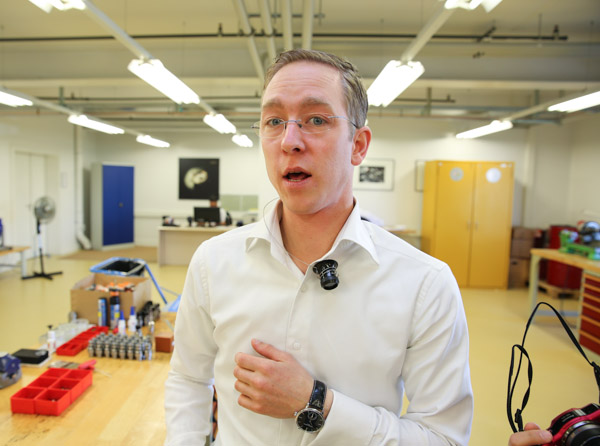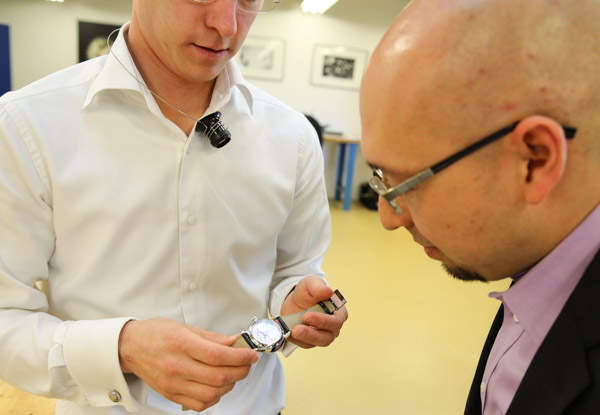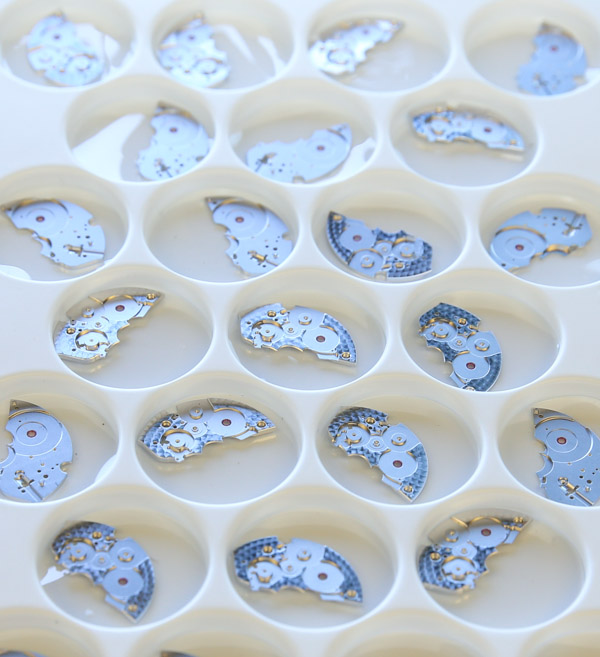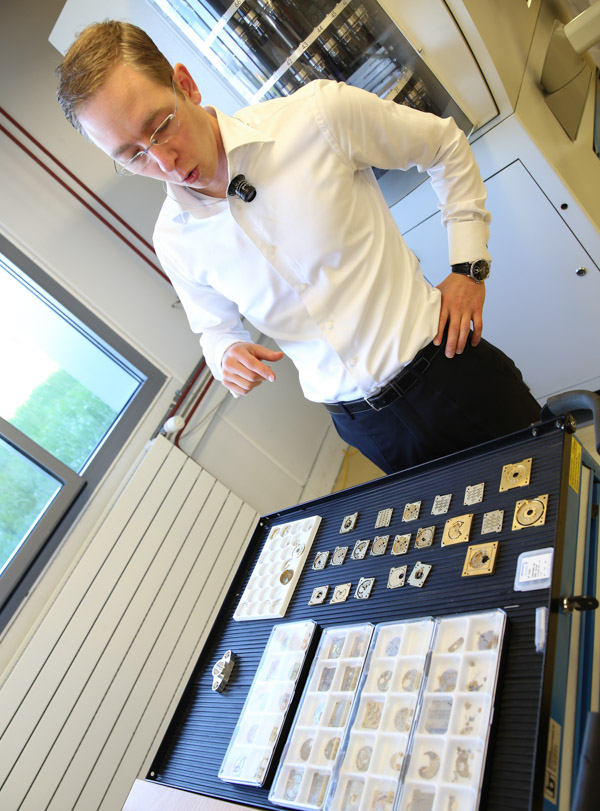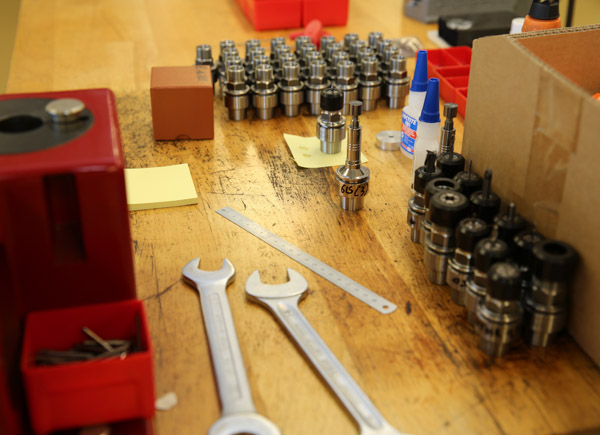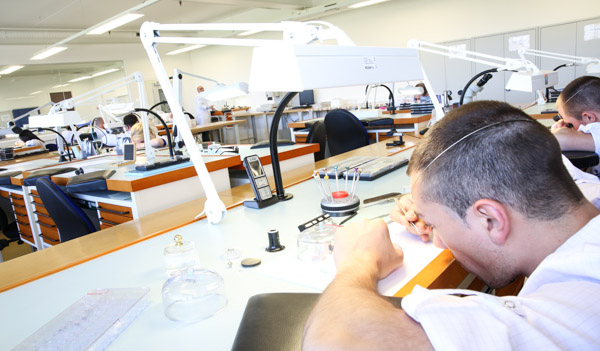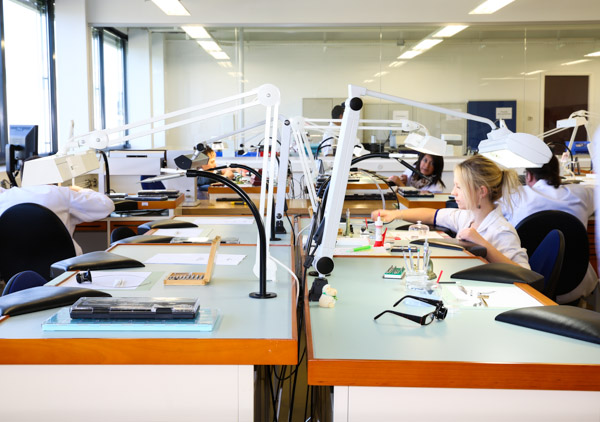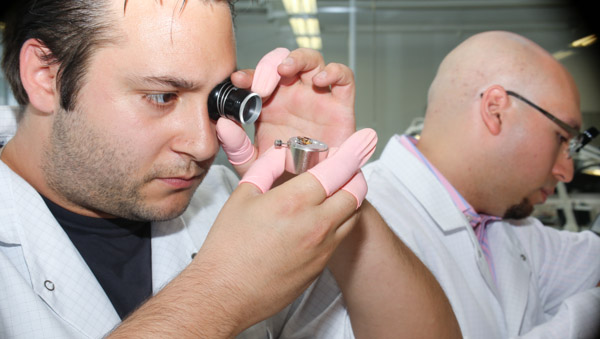
Watch movements of course use a lot of screws. Screwing them in is easy enough, but it is very dangerous. Screwdrivers have a habit of slipping, which can very easily damage other parts or scratch surfaces. Screw heads may be a bit forgiving when it comes to being scratched but most decorated or polished surfaces are not. So much of what you do involves very basic tasks such as screwing things, pushing things, or placing things in the right places – only using extreme steadiness on a miniature scale. Putting together a watch can be frustrating, but in a way it is peaceful and interesting.
After the basic elements of a movement are completed, it is time to start regulating it. This involves making sure it keeps good time. Regulating takes place after the balance wheel begins to beat. To get this far you need the escapement assembly, gear train, and mainspring barrel. Regulation is probably the other difficult part of movement making next to lubrication, but harder. For example, Andrew’s movement was extremely inaccurate at first – off by several minutes a day. Upon closer inspection, Pim found a tiny filament of lint that was traveling inside of the balance wheel. That is what caused it.
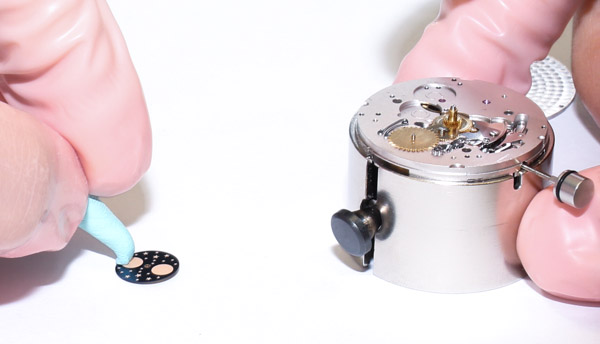

When I first put my movement on the timing machine it was off by something like 550 seconds a day. Certainly not up to chronometric performance. Unless you are talking about a free-spring balance wheel, on most good Swiss movements there are three things to adjust to help regulate a movement. Each is part of the balance spring and involves lengthening or tightening parts. Small pushes, pulls, and turns of components in the movement offer seemingly tiny tweaks that end up having huge effects on performance. The cool thing is that you can regulate movements while they are on the timing machines to see in real time if you are making things better or worse.
In a nutshell, regulation is a careful balancing act. Namely because getting the watch to be accurate in one position (such as face up), can have a large impact on another position (such as face down). For the most part, you can’t have any of them be perfect, else another position will be really off. It makes me really appreciate why brands developed things like tourbillons or other complex escapement systems that reduce the need to consider the balance wheel in various positions! A good example is that at one point I got the movement to be perfectly regulated. Meaning it was gaining about 0.0 seconds a day. I was thrilled until I learned that in another position, this exact adjustment yielded a rate result of plus 15 seconds per a day. More frustration ensued.
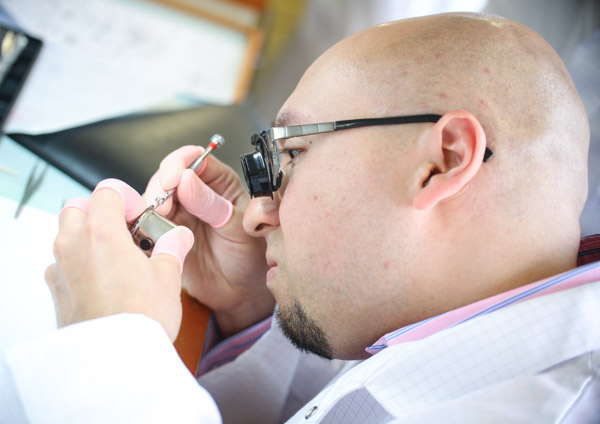
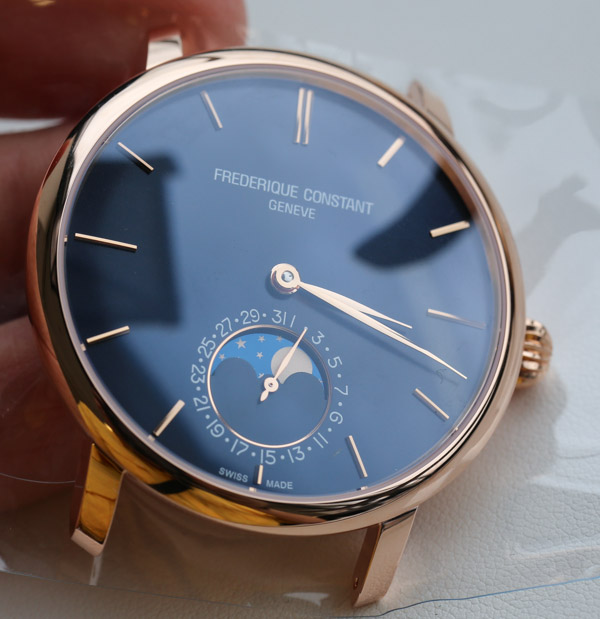
On complex movements, regulation must be done a number of times as complications are added. Additional features that draw on a movement’s power can have an affect on accuracy. Though for the most part if you get it done right the first time, you are safe. As I said, putting together a movement is mostly about doing everything in the right order. Pim knew the order by heart, and it was so many steps I could not guess how he learned them all. We worked off a technical schematic of the FC-705 caliber, but it wasn’t an instruction manual. I really think that the people who make instructions for Lego models need to make instruction manuals for the watch industry.
As careful as you need to be in assembling movements, they are designed to be assembled and reassembled – which is part of their brilliance. Watch movement designs do consider the watchmaker when they make new calibers – which is something you certainly notice often as assembly is logical and straightforward – at least it was with the FC-705. I’ve heard from a lot of watchmakers that they love working on Rolex movements, and I can now understand the types of things they are talking about.
After a movement is done, it is time to ready it for casing. The first step is attaching the dial and then the hands. Some places attach hands manually, but Frederique Constant (thankfully) uses a machine. You don’t want hands misaligned…Casing is a careful process that involved putting the movement into a case, inserting the crown, and making sure that there is no dust and that everything is clean. This part I didn’t like. Perhaps I was getting antsy at this phase. There was a point where I was using a small tool to dust off the moon phase indicator disc, and I felt like I just kept making it dirty. Small smudges or pieces of dust can get stuck or cling with static, and even compressed air can be ineffective when trying to remove them. It makes it very obvious why watch assembly rooms are as clean as possible, and why everyone must wear a watchmaker’s gown.
Before a watch can be shipped to a customer it must undergo quality control and testing. After specialists put the watches in pressure chambers and cycle through the functions, watches are placed on wrist movement simulators for about two days (sometimes more) to make sure that after the fresh movements are worn in, they still perform admirably.

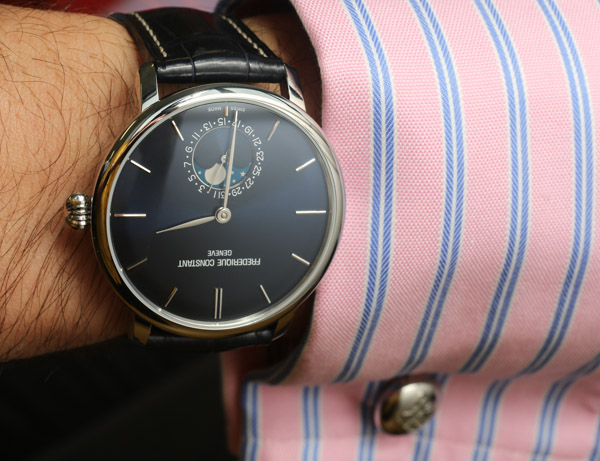
Whether or not watches are produced entirely by hand, using a combination of machines and people, or almost entirely by robots, the process is often similar with the same checks, steps, and quality assurance protocols. It seems that in many ways, a human touch is better than a machine, but in the right environment I can see how a machine can replace the traditional human watchmaker. Nevertheless, for the most part, the watch industry in Switzerland is still very human-centric. Which is a good thing because it feels great to know that a series of human beings, trained for years, worked on your specific timepiece.
No one needed to tell me before this experience that watches still represent a good value even priced at several thousand dollars (given all the labor and production difficulty), but going through most of the assembly steps myself I have an even more connected appreciation for watchmaking. I can also say that for the price, Frederique Constant and Alpina watches are a great value. I’ve heard people suggest that because their prices are often lower than their competitors they must be doing something differently. Nope. The production of watches here differs very little from that of watches two, three, or many more times their price. While we had a fantastic time with Frederique Constant and appreciated their generosity, this article wasn’t meant to be a sales pitch for their brand. Having said that, our perception of their status as a watchmaker and in-house movement producer has been greatly increased after this experience. While I’ve known this for a while, I can say once again that their watches represent really good value for the money.
As someone who spends much of their time writing about watches, it is good that I finally got to build one myself. Watchmakers come in a variety of education levels, skill, and talent, but it is nice to know what it takes to put this stuff together first hand. As our winner Andrew pointed out, it does take out some of the magic of horology, to understand how it all works, but at the same time, he pointed out that one can now much better understand why watches are expensive, and why some are much more expensive than others.

